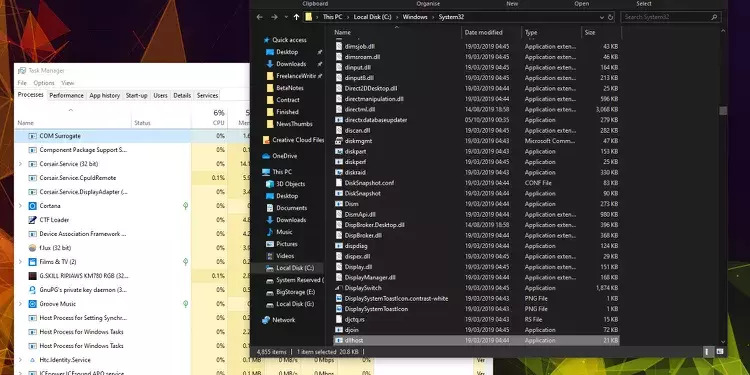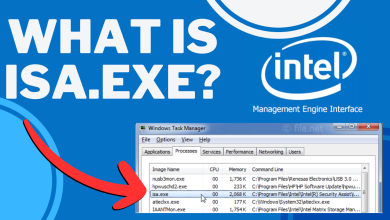What is “COM Surrogate” & Should You Remove It?
- COM Surrogate is a system process in Windows, known as "dllhost.exe" in Task Manager, that hosts COM objects, acting as a mediator for software components communication.
- Primarily to prevent crashes by isolating unstable COM objects, it also generates thumbnails and plays media in Windows Explorer and Media Player, usually without high CPU usage.
- Genuine COM Surrogate is safe, but it can be mimicked by viruses. To check, open Task Manager, right-click COM Surrogate, and verify the file location; legitimate processes are in C:/Windows/System32.
On Windows, one of the most common processes that can, at times, raise eyebrows is COM Surrogate. While this process, in itself, is legitimate, there can be reasons to believe otherwise. This article will go in-depth to explain what COM Surrogate is and why it is important for your PC.
Table of Contents
What is COM Surrogate?
COM Surrogate is a genuine system process on Windows that is responsible for running and hosting COM objects. You may also see it as “dllhost.exe” in your Task Manager, since this is the name of the executable file hosting the COM Surrogate process.
COM, or Component Object Model is a binary-interface standard, introduced by Microsoft to allow different components of the software to interact with one another, irrespective of the language they were programmed in. In simpler terms, it acts as a mediator or translator in allowing the software components to “talk” to one another.

It’s essentially a helper program that acts as a sandbox for potentially unstable COM objects, preventing them from crashing the main program they’re associated with. COM Surrogate is used to load DLLs, so while interacting with Microsoft Explorer, it acts as a ‘sacrificial‘ process, isolating it from the main program. This ensures that if one DLL fails, Explorer as a whole doesn’t crash.
If you still don’t understand what this means, please read further, as this may clarify the purpose and use of this process within Windows.
What is the Purpose of COM Surrogate?
While the main purpose of COM Surrogate is to act as a protective layer in opening COM files, separate from the main program, they are also used to generate thumbnails for different file types in Windows Explorer, like images, documents and videos. The reason for this is quite self-explanatory—thumbnails for different files will allow you to quickly identify them.

In addition to this, COM Surrogate is used for displaying icon overlays, which are small previews that appear when you hover your cursor over a file. Other than that, it is used to play specific types of media in Windows Media Player.
Since all of the above tasks aren’t very resource-intensive, this process shouldn’t consistently consume a lot of your CPU resources. If it does, try validating if the COM Surrogate process in your Task Manager is legit, or simply a virus.
Is COM Surrogate a Virus?
COM Surrogate is NOT a virus, although some exploit developers or hackers can take advantage of its legitimacy and create viruses or malware with the same name. This is why it is important to identify whether COM Surrogate on your PC is legitimate or not.
To do this, open Task Manager, right-click on “COM Surrogate,” and select ‘Open File Location.’ If the file destination directs you to C:/Windows/System32, it is legitimate. However, if you see a different folder, try to terminate the process and delete the entire destination folder.

In general, it is not advisable to remove COM Surrogate since it is a core Windows process. Nevertheless, if you have verified its legitimacy and the process continues to consume excessive system resources, it is possible that it may be processing data in the background and so, it will likely resolve on its own after some time.
FAQs
No, COM Surrogate is not dangerous. However, hackers may exploit its legitimacy by creating viruses or malware with the same name. To verify legitimacy, open Task Manager, right-click on “COM Surrogate,” and select ‘Open File Location.’ Legitimate processes will lead to C:\Windows\System32, while suspicious cases may direct to a different folder.
If you see multiple processes under the same name, don’t worry since it is possible that multiple instances of COM Surrogate may be running simultaneously.
While system crashes are normal, frequent issues, especially with high resource consumption can be problematic. This is why it is advisable to immediately check for the processes’ legitimacy.
 Reviewed by
Reviewed by 




